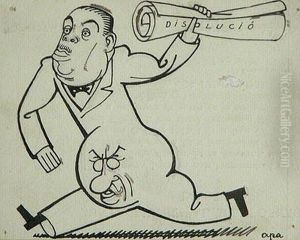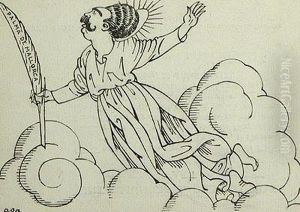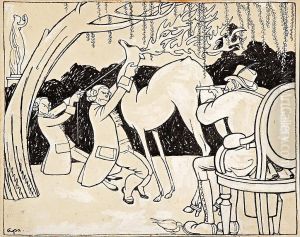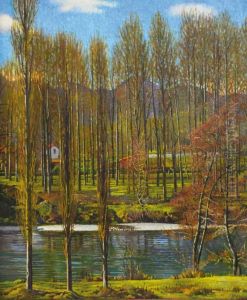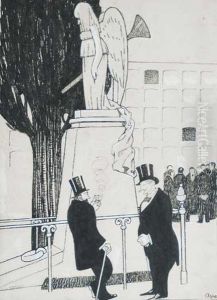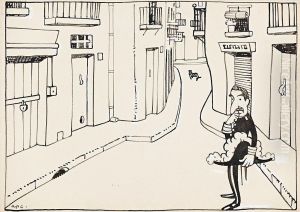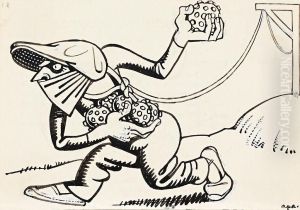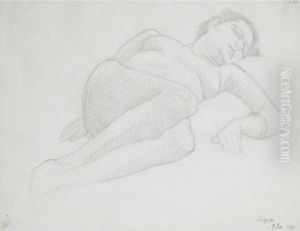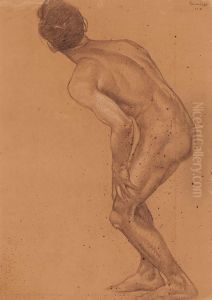Feliu Elias Apa Paintings
Feliu Elias i Bracons, better known by his pseudonym Feliu Elias Apa or simply Apa, was a multifaceted Catalan artist, born in 1878 in Barcelona, Spain. His career spanned various disciplines, including painting, drawing, caricature, and journalism, making him a prominent figure in the Catalan art scene of the late 19th and early 20th centuries. Apa was not just an artist but also a significant contributor to the cultural and political discourse of his time, often through his work as a caricaturist and writer.
Apa's early life was marked by his passion for art, leading him to study at the Llotja School in Barcelona, a prestigious art and design school where many Catalan artists of the period began their careers. His artistic style was influenced by Modernisme, the Catalan variant of Art Nouveau, yet he also drew inspiration from the broader European movements of Symbolism and Realism. Throughout his career, Apa exhibited a keen ability to capture the essence of his subjects, making his works deeply personal and often reflective of the social and political climates.
In addition to his paintings and drawings, Feliu Elias Apa was highly regarded for his caricatures, which he published in various magazines and newspapers under the pseudonym 'Apa'. His caricatures were not merely humorous sketches but insightful social and political commentary, reflecting his critical views on the issues of his day. These works gained him both acclaim and controversy, particularly for their candid critiques of figures and institutions.
Beyond his artistic pursuits, Apa was deeply engaged in the cultural life of Catalonia, contributing to various magazines and participating in intellectual circles that debated the future of Catalan culture and politics. His commitment to the Catalan cause was evident in both his art and his writings, where he often explored themes of identity, tradition, and autonomy.
Feliu Elias Apa's legacy is that of a versatile and committed artist who used his talents to engage with and critique the world around him. His works remain a testament to the vibrant cultural landscape of early 20th-century Catalonia. Apa passed away in 1948, leaving behind a body of work that continues to be celebrated for its artistic merit and its insightful commentary on society and politics.
